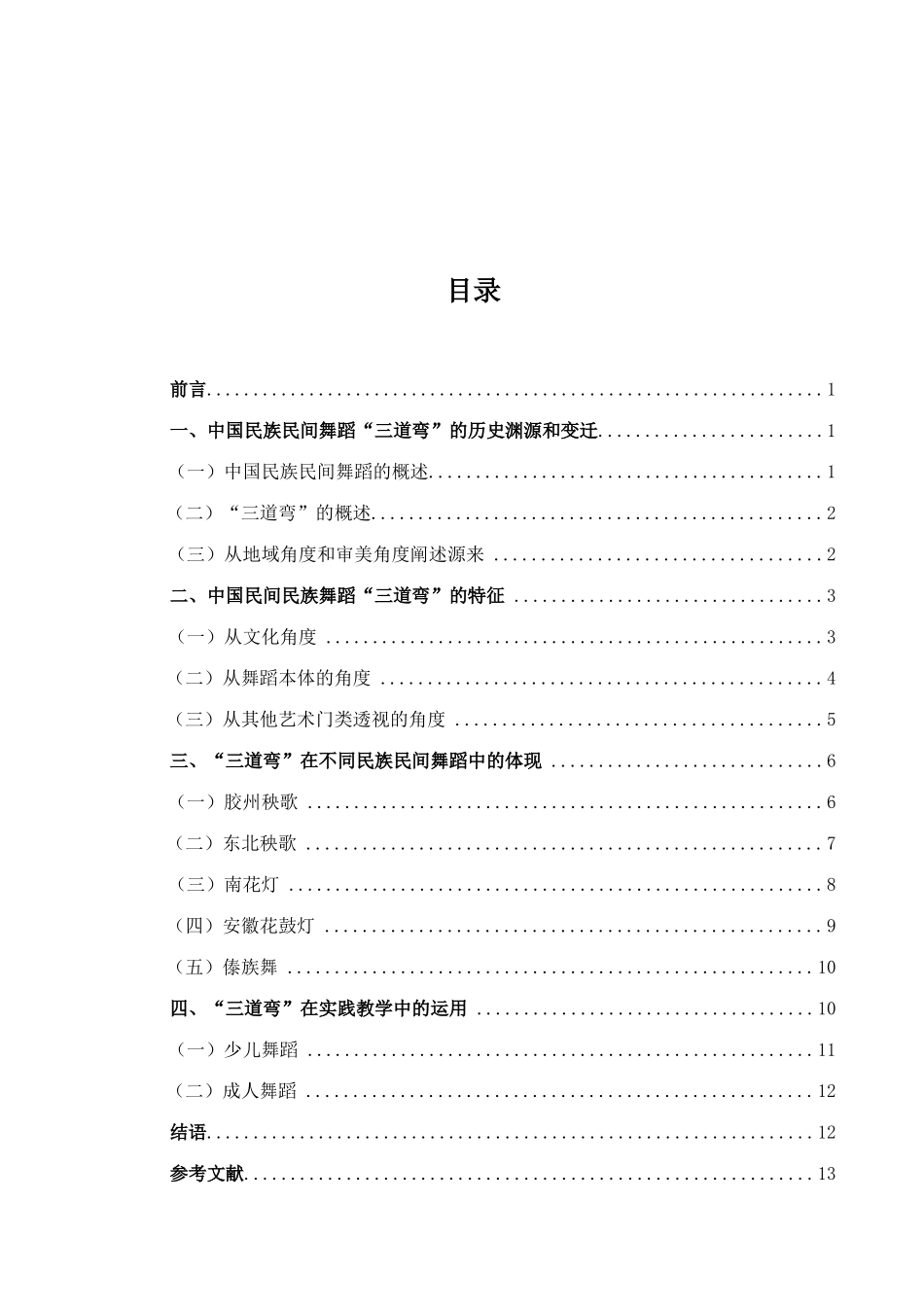中国民族民间舞蹈中“三道弯”的发展及艺术特征摘要:我国是一个多民族国家,每个民族都有其不同的舞蹈形态和审美特征。“三道弯”是一种特有的舞姿,是指在舞蹈动作中头、胸和腰与臀、胯和腿以反方向呈 S 型的形态。本文先从地域角度和审美角度阐述“三道弯”的历史渊源和变迁。接着,着重从文化、舞蹈本体和其他艺术门类透视的这三个角度来重点阐述“三道弯”的艺术特征;然后将从胶州秧歌、东北秧歌、云南花灯、安徽花鼓灯、傣族舞这五个不同民族民间舞蹈中分别体现“三道弯”的各种舞蹈体态;最后,阐述针对少儿和成人的心理与身体特征的不同将“三道弯”体态运用合理的教学方法融入实践。关键词:三道弯;中国民族民间舞蹈;舞蹈姿态;艺术特征The Development and Artistic Characteristics of "Three Bends" in Chinese Folk DanceAbstract: China is a multi-ethnic country, each nation has its own dance form and aesthetic characteristics. "Three bends" is a unique dance form, which refers to the S shape of head, chest, waist and hip, crotch and leg in the opposite direction. This article first elaborates the historical origin and changes of the "three bends" from the regional and aesthetic perspectives. Secondly, from the perspective of culture, dance noumenon and other art categories, the artistic characteristics of "three bends" are elaborated. Then, from the five different ethnic folk dances of Jiaozhou Yangge, Northeast Yangge, Yunnan Flower Lantern, Anhui Flower Drum Lantern and Dai Dance, the dancing postures of "Three Bends" will be embodied respectively. Finally, the article elaborates how to integrate the "three bends" posture into practice with reasonable teaching methods according to the different psychological and physical characteristics of children and adults.Key Words: Three bends; Chinese National Folk Dance;Dancing posture; Artistic features目录前言..................................................................1一、中国民族民间舞蹈“三...


